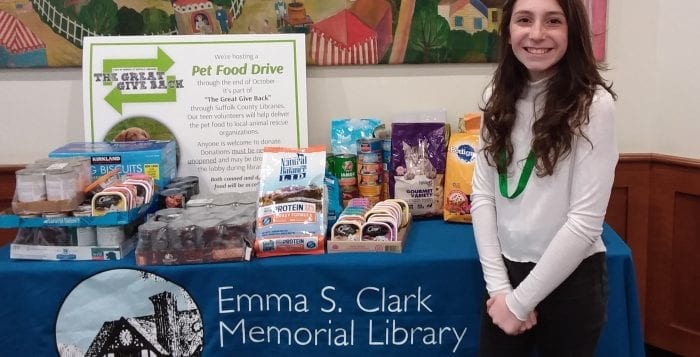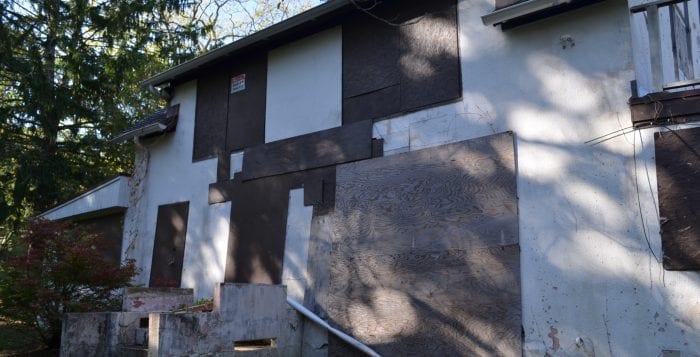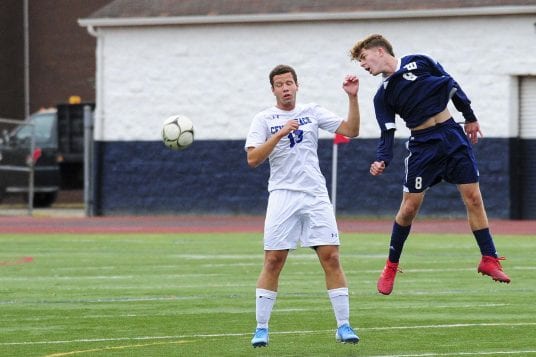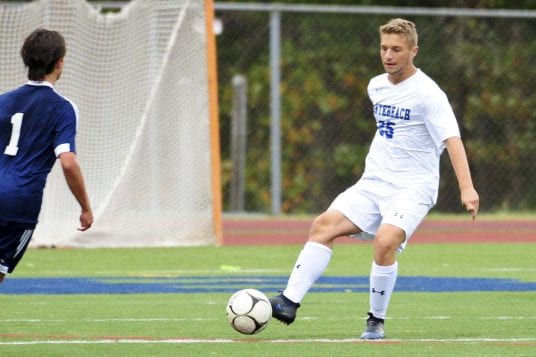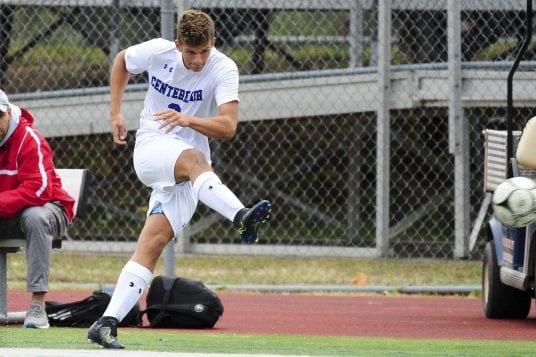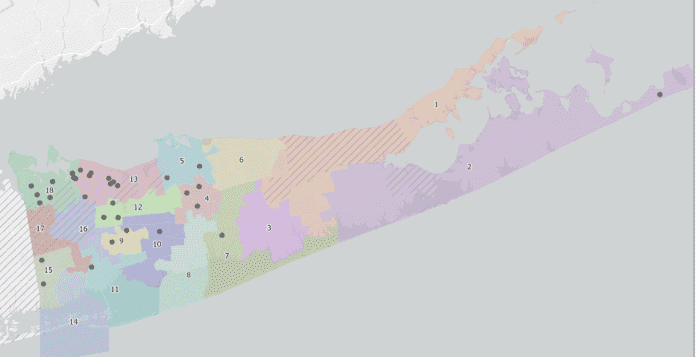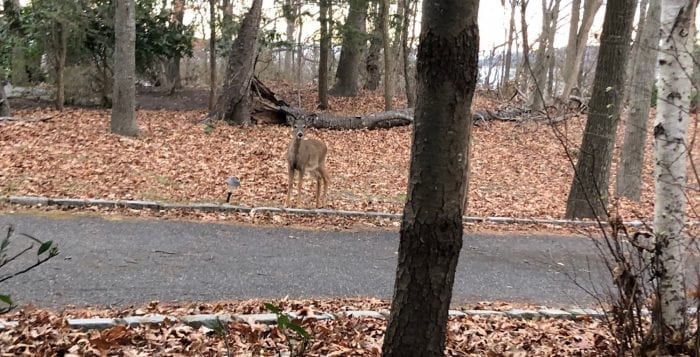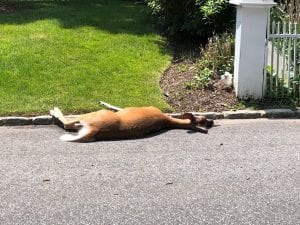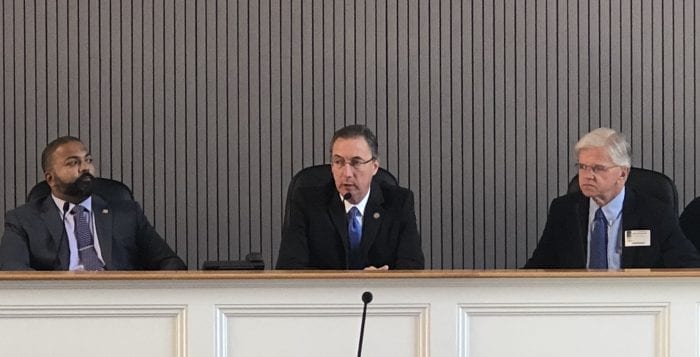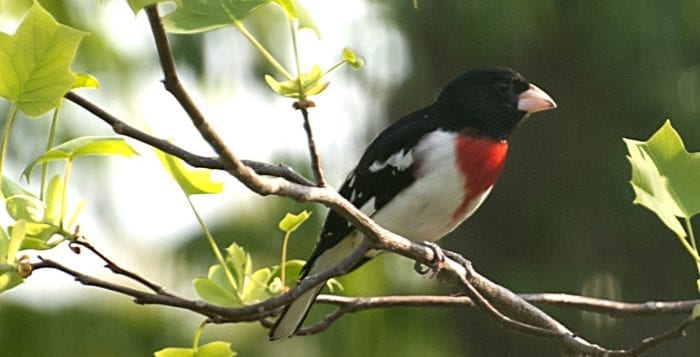By Leah Chiappino
Local libraries are setting aside time this weekend to focus on community, service, and volunteerism. On Saturday, Oct. 19, over 160 libraries throughout New York State are participating in the 3rd annual Great Give Back, a program started by the Suffolk County Public Library Directors Association and the Suffolk Cooperative Library System in 2017. It expanded to Nassau County in 2018, before turning into a statewide initiative this year. Each library selects its own service projects, from medicine disposal initiatives to crocheting mice for local animal shelters.
Lisa DeVerna, head of public relations at Emma S. Clark Memorial Library in Setauket, praised the initiative. “All libraries do these types of activities throughout the year. But I love the idea that on one day, ALL of the libraries have community service events,” she said. “It’s a celebration of giving back. When you combine them together, there is a great variety of services throughout Long Island, thanks to libraries.”
To find out what your local library might be planning, visit www.thegreatgiveback.org. The following is a sampling of events open to all with no registration necessary.
Emma S. Clark Memorial Library
120 Main St., Setauket
“At Emma Clark Library we’ve decided to participate by focusing on animals because really, who doesn’t love helping animals?” DeVerna said. October 19 kicks off the library’s pet food drive, which will continue until the end of the month. New, unopened pet food (both canned and dry) is appreciated and all are welcome to donate (residents or nonresidents) and all residents and nonresidents are welcome to donate during library hours, as there will be a bin in the lobby. Call 631-941-4080.
North Shore Public Library
250 Route 25A, Shoreham
From 2:30 to 4 p.m., the community can write letters, draw pictures or make cards to be included in the Operation Gratitude Care Packages that are sent to troops. The organization has a special need for letters specifically written for new recruits, veterans and first responders. While you write and draw, husband and wife Susan and Don will present a concert titled Memorable Melodies and refreshments will be provided. The library is also conducting a sock drive, which will be donated to Maureen’s Haven, a Homeless Outreach serving LI East End for its weekly foot clinic. Call 631-929-4488.
Huntington Public Library
338 Main St., Huntington
At its main building campus, the library will host a Volunteer Fair from 2 to 5 p.m. featuring representatives from more than 25 local organizations including The Guide Dog Foundation, America’s VetDots, Huntington Hospital, League of Women Voters of Huntington, Literacy Suffolk, Northport Cat Rescue Association and Island Harvest. Call 631-427-5165.
Middle Country Public Library
101 Eastwood Blvd., Centereach
575 Middle Country Road, Selden
At the library’s Centereach branch volunteers can write letters to service members from 9:30 a.m. to 5 p.m. There will also be a tote bag decorating station for homeless shelters and food pantries from 11 a.m. to 1 p.m. and a pet toy-making station to donate to local animal shelters from 1 to 3 p.m. At the library’s Selden Branch there will be an opportunity to make superhero kits for children in foster care from 10 a.m. to 12 p.m., couponing for troops from 11 a.m. to 3 p.m. and planting of daffodil bulbs from 12:30 to 1:30 p.m. All are welcome and no registration is required. Call 631-585-9393.
Cold Spring Harbor Library
95 Harbor Road, Cold Spring Harbor
A Pet Adoption Fair will be held in the library’s parking lot from 1 to 3:30 p.m. Stop by and adopt a new friend and enjoy delicious pet-themed treats provided by IBake and Flynn Baking Co. Call 631-692-6820.
Port Jefferson Free Library
100 Thompson St., Port Jefferson
The library will be conducting an all day food collection drive for a local food pantry for The Great Give Back. Donations of beans or canned vegetables, canned fruit, cereal, oatmeal, pasta, baby wipes, soap, shampoo, conditioner, toilet paper, tissues, diapers, hand sanitizer, Clorox wipes, hand lotion and disinfectant spray are appreciated. Call 631-473-0022 for further information.
Smithtown Library
Main Branch, 1 North Country Road, Smithtown
The Smithtown Library will be hosting an Adopt a Soldier, Craft Program from 10 a.m. to 3 p.m. in which families will be able to make a card or write a letter, thanking a current service member or veteran for their service. The cards will be given to America’s Adopt a Soldier program, a Virginia-based organization involved in veterans support services and outreach. Open to all. Call 631-360-2480.
Sachem Public Library
150 Holbrook Road, Holbrook
From noon to 4 p.m. the library will be taking part in Crochet for a Cause, in which people can crochet blanket squares that will be assembled to donated to local adult homes. Participants can also crochet toy mice for local animal shelters “We settled on that program because it’s a real hands-on program for all ages. Some basic crochet skills are helpful and people are welcome to bring their own supplies, but we will have [needles and yarn],” said librarian Cara Perry. For more information, call 631-588-5024.
Comsewogue Public Library
170 Terryville Road, Port Jefferson Station
From 10 a.m. to 1 p.m. the library will host a Volunteer Fair for adults and teens featuring representatives from a variety of organizations seeking volunteers. Participants may drop in at any time during the event to learn about where and how they are needed to assist within the community. Call 631-928-1212.















